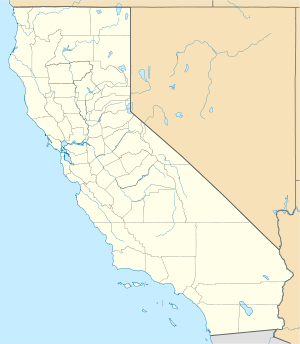Eppleton Hall (1914)

Eppleton Hall in San Francisco
|
|
| History | |
|---|---|
|
|
|
| Owner: |
|
| Port of registry: |
|
| Builder: | Hepple and Company, South Shields |
| Yard number: | 632 |
| Completed: | 1914 |
| In service: | 1914-1967 |
| Status: | Museum ship at San Francisco, California |
| General characteristics | |
| Type: | Tugboat |
| Tonnage: | 166 gross register tons (GRT) |
| Length: | 100.5 ft (30.6 m) |
| Beam: | 21.1 ft (6.4 m) |
| Depth of hold: | 10.8 ft (3.3 m) |
| Installed power: | 500 ihp (370 kW) |
| Propulsion: | steam side-lever engines |
| Speed: | 10 knots (19 km/h; 12 mph) |
|
Eppleton Hall
|
|
| Location | Fort Mason, Bld. 201, San Francisco, California |
| Coordinates | 37°48′34″N 122°25′19″W / 37.80944°N 122.42194°WCoordinates: 37°48′34″N 122°25′19″W / 37.80944°N 122.42194°W |
| Part of | San Francisco Maritime National Historic Site (#01000281) |
| Added to NRHP | June 27, 1988 |
Eppleton Hall is a paddlewheel tugboat built in England in 1914. The only remaining intact example of a Tyne-built paddle tug, and one of only two surviving British-built paddle tugs (the other being the former Tees Conservancy Commissioners' vessel, PS John H Amos), she is preserved at the San Francisco Maritime National Historical Park in San Francisco, California.
Eppleton Hall was built in 1914 by Hepple and Company of South Shields, for the Lambton and Hetton Collieries Ltd, and named after the house near Penshaw owned by the Hetton Coal Company. She was designed to tow seagoing colliers from sea to wharf side and back, primarily in the River Wear and to and from the River Tyne. For sailing ships this saved time, while for larger steam and motor vessels it saved navigation and pilotage costs. She was also used to tow newly built ships out to the North Sea.
She is one of two survivors of a once-numerous type of steam powered paddle tug that began with the 1814 "Tyne Steam Boat," later named Perseverance. One of the last of her type built, Eppleton Hall was equipped with twin surface condensing side-lever engines of the "grasshopper" or 'half-lever' type, totalling 500 indicated horsepower (370 kW), also built by Hepple & Company. Her speed was 10 knots (19 km/h; 12 mph), and her engines could function independently of each other to aid manoeuvrability, enabling her to turn inside her own length.
The tug was operated from 1914 by the Lambton & Hetton Collieries Ltd which, merged with the Joicey Collieries in 1924 to form the Lambton, Hetton & Joicey Collieries Ltd. In November 1945, a little before the collieries themselves were nationalised and vested in the National Coal Board, the towage business was sold to France, Fenwick Tyne and Wear Ltd which, after refurbishment, operated her at Sunderland on the River Wear until 1964. In 1952, the tug was modified slightly to obtain a passenger certificate, so that she could transport officials from newly built ships after they had completed their sea trials.
...
Wikipedia

